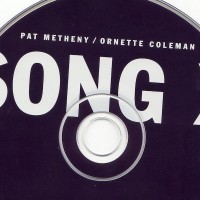Ornette Coleman, who has died at age 85, called his music the Shape of Things to Come — then later harmolodics. Everyone else, eventually, came to call it free jazz. And that fits. It was, after all, so very free.
Some of it was hard to understand, maybe still is. These were, after all, new pathways found, new sounds heard. The man himself always seemed inscrutable, almost naive about what can and can’t be done. What should and shouldn’t be tried. That added to the mystery, and to the legend.
There were technical things that have made his work great. For instance, polytonality (playing in more than one key) was an early trademark. But when you start talking in those terms, you start giving away the one thing that really mattered.
It was, and this is that one thing, free.
“THEME FROM A SYMPHONY, VARIATION ONE” (DANCING IN YOUR HEAD, 1976): This is the kind of music that would always cause my mother to ask: “When are they going to stop practicing?” To the neophyte, Prime Time could definitely leave the impression that chaos was the preferred mode of operation. Even when they lock into a groove, the constantly-shifting focus of the bandmembers (the guitars funk out while the drums alternate between following Ornette Coleman’s line and that of the bass player) can misdirect the listener’s ear.
This isn’t James Brown. It’s not Bitches’s Brew-era Miles Davis, either. It’s what happens when the traditional structures are tossed aside in favor simultaneous rhythmic and melodic development. Ornette’s own definition of “harmolodics” never quite captured the idea. For that, you just have to listen. — Mark Saleski
“LONELY WOMAN” (THE SHAPE OF THINGS TO COME, 1959): The perfect introduction to free jazz for me, in that the set up was familiar: a brief introduction of the melody, then off into fast-moving improvisation. Just like bop, right? Head, solo, head. Not hardly. Without a piano, there were no chords, little harmony. Still, there are times when this record genuinely swings, and that eased the transition into what became a dramatic incursion of avant-garde thinking in the music — both in the broader spectrum of jazz, and in the late Ornette Coleman’s own catalog.
I’ve always felt the rhythm section here didn’t get its due — listen to Charlie Haden’s pleasant thrum on “Lonely Woman,” and to Billy Higgins’ rattling asides on the brushes — since they created the needed spaces for Ornette Coleman to stalk this new thing. Don Cherry answers every wail from Ornette like an angry spouse, chirping and combative. But Coleman won’t be denied, his voice rising above and then beyond everything else, walking untrodden paths for the very first time.
When I first put this record on, some time later, I was right there with him. And I remembered, listening again on this sad day, what a tingly, very alive feeling there was when I discovered The Shape of Things to Come. Aptly named, and brilliantly conceived, Ornette Coleman still does that to me. In many ways, after so much retrenchment in the jazz genre, everything laid out here is still brand new. — Nick DeRiso
“3 WISHES” (VIRGIN BEAUTY, 1988): Though Virgin Beauty will never go down as one of my favorite Ornette Coleman albums, it was my first one and is full of things that still intrigues. It sounded so sleek, so modern, for something coming from the Godfather of Whack Jazz. Already nearing 60 years old at the time, Coleman was supposed to be settling in on the waning years of a 30-year-old music revolution. This record is instead one you might expect from a fresh, young voice on the sax, trying to build a bridge between harmolodics and contemporary funk.
Many had thought — and many still do — that Ornette had to be on some serious drugs to make music that ignored long-held conventions on Western song forms. So maybe it made sense that for this opening track, he brought in someone who actually was on some serious drugs: Jerry Garcia. I had a hard time understanding the big fuss about Garcia’s alleged guitar virtuosity until he matched weirdness wits with the old master. On this Arabian repeating melody punctuated by Coleman’s untrained trumpet blasts, it’s Jerry Garcia who skitters around the programmed beats bringing a real edge to the song while ironically the leader plays his sax straight. Even as his guitar was buried in the mix too much for my taste, he was showing up the older guy.
I’m not saying Garcia’s pairing with the late Ornette Coleman was on par with Pat Metheny’s own encounter a couple of years earlier, but Garcia was a folky rocker not a jazzman, and he felt right at home alongside another legend of an entirely different kind. — S. Victor Aaron
“SPELLING THE ALPHABET” (VIRGIN BEAUTY, 1988): Ornette Coleman and Jerry Garcia on the same track? Let’s have another! This short, one-and-a-half minute track has Ornette and Co. tumbling down through a single descending line by splitting it into short (4 notes or less) segments, and then playing a kind of fizzy gamelon with the resultant parts: first Jerry, then Ornette, then the basses (Al MacDowell and Chris Walker), then the drummers (Denardo and Calvin Weston).
When the full band plays the entire line, it takes on a sort of off-kilter Caribbean feel, much like Science Fiction‘s “The Good Life.” Ornette Coleman takes a short solo before the whole group returns to a unison phase. While I would have loved it if Jerry had been given some solo space, it’s nevertheless pretty cool to hear that signature guitar sound coursing through Prime Time’s supercharged jazz/funk thing. — Mark Saleski
“HAPPY HOUSE” (FINDING FORRESTER soundtrack, 2000; originally recorded in 1971): There was a scene in this Sean Connery film where his prestigious but reclusive author character is furiously pecking away on a typewriter. The music that accompanied it was the equally frantic Ornette Coleman track “Happy House.”
Like most of the best Ornette tunes, this has a unforgettable theme: bop lines broken up and separated by Ed Blackwell‘s drum fills. The front line of Coleman (alto sax), Dewey Redman (tenor sax), Don Cherry (pocket trumpet) and Bobby Bradford (trumpet) creates a hybrid brass sound sitting some between small jazz combo and marching band. And then everyone peels off solos, one by one. Cherry with his uncommon and knotty vocabulary gets my vote as the best, but I also can’t help but to notice Charlie Haden’s bass rising and falling down the scale like waves on the sea. The individual soloing culminates into group soloing, while Haden and Blackwell keep things steady, and then Blackwell gets his turn to burn before it’s back to the theme once again to take the song out.
This original cut didn’t see the light of day until about 10 years after it was recorded, but it’s been covered plenty of times since then from the Coleman spin-off band Old and New Dreams to Vital Information. It’s joyful, energetic persona makes it one of those avant garde tunes that’s actually irresistible from the get-go. That’s the genius of Ornette Coleman at work. — S. Victor Aaron



